Q
how to put toyota hilux in reverse
To shift a Toyota Hilux into reverse, first make sure the vehicle is completely stationary and press down the clutch pedal (for manual transmission models) or the brake pedal (for automatic transmission models). For manual transmission models, push the gear shift lever all the way to the left and then move it backward to the position marked "R". For automatic transmission models, you need to press the unlock button on the gear shift lever (some models may require pulling up the ring at the bottom of the gear shift lever) and then move the gear shift lever to the "R" position. During operation, the reverse gear indicator light will be displayed on the instrument panel. It's worth noting that newer Hilux models may be equipped with a reverse camera or sensors, which will automatically activate the assist system when reverse gear is engaged, and some high-end models also have a reverse radar warning sound function. Malaysia's tropical climate can affect the performance of transmission oil, so it is recommended to regularly check the condition of the transmission oil and replace it according to the maintenance manual. If there is abnormal resistance or abnormal noise when shifting gears, you should go to an authorized service center for inspection in time, because long-term exposure to high temperature and high humidity environments may accelerate the aging of transmission seals. Hilux models of different years have slightly different shift mechanism designs. For example, models after the 2015 facelift adopted a more ergonomic gear shift lever shape, but the basic operating logic remains consistent.
Special Disclaimer: This content is published by users and does not represent the views or position of PCauto.
Related Q&A
Q
What is the difference between 2.8 L and 3.0 L Hilux?
In Malaysia, there is no 3.0-liter variant of the Toyota Hilux; instead, the models available feature a 2.8-liter engine, such as the 2023 Hilux Double Cab 2.8 Rogue AT 4WD and the 2023 Toyota Hilux GR Sport 2.8 AT. Taking these two 2.8-liter variants as examples, they offer more powerful performance compared to the 2.4-liter models, with the 2.8-liter engine delivering a maximum power of 204 PS, while the 2.4-liter engine reaches a maximum power of 150 PS. Additionally, the 2.8-liter models provide a maximum torque of 500 N·m, compared to 400 N·m for the 2.4-liter variants.
In terms of features, some versions of the 2.8-liter models come equipped with more advanced active safety technologies, such as lane-keeping assist, lane departure warning systems, active braking/safety systems, and forward collision warning—some of which are not available on select 2.4-liter models. Furthermore, the 2.8-liter variants also offer enhanced comfort features, such as 8-way power-adjustable front seats and upgraded air conditioning systems in certain versions.
When it comes to pricing, the 2.8-liter models are priced higher, with the 2023 Hilux Double Cab 2.8 Rogue AT 4WD retailing for RM 158,880 and the 2023 Toyota Hilux GR Sport 2.8 AT costing RM 169,080, both of which exceed the prices of their 2.4-liter counterparts.
Q
Which is better, Hilux or D-Max?
Both the Toyota Hilux and Isuzu D-Max have their unique advantages, making it challenging to simply declare one as better than the other. The Hilux, a model under the Toyota brand, is renowned for its reliability and durability, with many owners reporting that its mechanical structure is stable enough to handle various complex and harsh road conditions. Its extensive maintenance network makes post-purchase upkeep convenient; in remote areas, finding parts and repair services is relatively easy. The price range for the Hilux varies from RM 89,100 to RM 169,080, with multiple powertrain configurations available.
On the other hand, the Isuzu D-Max shines in terms of ride comfort and interior quality. Its interior design places a strong emphasis on ergonomics, offering comfortable seating and a smooth driving experience. If you frequently navigate challenging terrains and prioritize the vehicle's durability and stability, the Hilux is an excellent choice. However, if you place a higher value on driving comfort and interior quality, the D-Max may be more suitable for your needs.
Q
What is the best engine of Hilux ?
The Toyota Hilux offers various engine options, each with its own characteristics, so the “best” choice ultimately depends on individual needs. The 2.4-liter diesel engine, such as that found in the 2023 Toyota Hilux Single Cab 2.4 MT 4WD, has a displacement of 2393 mL, delivering a maximum power of 150 PS, 110.3 kW, and a peak torque of 400 N·m. This variant is an excellent choice for users who prioritize fuel efficiency and everyday practicality, as it adequately meets the demands of daily commuting and general cargo transport on regular road conditions. Moreover, it is relatively affordable, with the Single Cab model priced at RM 103,880.
In contrast, the 2.8-liter turbocharged diesel engine provides a more robust performance, as seen in the 2023 Hilux Double Cab 2.8 Rogue AT 4WD. This engine boasts a displacement of 2755 mL, generating a maximum power of 204 PS, 150 kW, and a peak torque of 500 N·m. It handles complex terrains and heavy load requirements with ease, proving powerful strength in off-road situations or when towing heavy loads. Additionally, high-end versions equipped with this engine often come with more advanced features and luxurious interiors, but at a higher price point, such as the 2023 Toyota Hilux GR Sport 2.8 AT, which retails for RM 169,080.
If you frequently encounter challenging road conditions, have heavy loading needs, or seek a more powerful driving experience, the Hilux with the 2.8-liter engine would be a better choice. However, for those who primarily use the vehicle for everyday purposes, the 2.4-liter engine is more than sufficient and offers better value for money.
Q
What is the fuel range of a Toyota Hilux?
The range of the Toyota Hilux depends on several factors, including the specific model, driving conditions, and driving style. Generally, the Hilux has a fuel tank capacity of 80 liters. For instance, the official combined fuel consumption of the 2023 Hilux Double Cab 2.8 Rogue AT 4WD is 10.2 liters per 100 kilometers. Based on this fuel consumption and the 80-liter tank, the estimated range can be calculated as follows: 80 liters divided by 10.2 liters per 100 kilometers, which equals approximately 784 kilometers.
As another example, the official combined fuel consumption for the 2023 Toyota Hilux GR Sport 2.8 AT is 8.5 liters per 100 kilometers. Using the 80-liter tank, the range is roughly 80 divided by 8.5, resulting in approximately 941 kilometers. It is important to note that these are only estimates, and actual range may vary due to factors such as terrain, traffic conditions, and vehicle load.
Q
How many cylinders does a 3.0 Hilux have?
The commonly found 3.0-liter diesel version of the Toyota Hilux in the Malaysian market (model 1GD-FTV) features a 4-cylinder inline engine. Despite its larger displacement, Toyota has optimized the turbocharging (D-4D technology) and fuel injection system to ensure a balance between power output and fuel efficiency, delivering up to 204 horsepower and 500 Nm of torque. This engine is quite popular locally, particularly for commercial and off-road applications that require high load capacity or long-distance driving. Its durability and low maintenance costs are also key reasons why Malaysian consumers choose the Hilux.
It's important to note that, although it has a displacement of 3.0 liters, the four-cylinder design is lighter and more fuel-efficient compared to the older V6 engine, while also meeting modern emissions standards. For those seeking stronger performance, the Hilux's 2.8-liter version (also a 4-cylinder) is worth considering, as it has slightly different tuning but remains equally reliable. It is recommended to take a test drive to experience the low-end torque performance and consult with a dealer regarding regular maintenance to keep the engine in optimal condition.
Q
How much weight can the Toyota Hilux carry in its cargo bed?
The load capacity of the Toyota Hilux cargo bed can vary depending on the specific model, production year, and configuration. For instance, the Toyota Hilux Champ has a load capacity of 1,000 kilograms. Similarly, the standard Toyota Hilux sold in Malaysia is officially rated for the same 1,000-kilogram capacity.
It's important to note that exceeding the recommended load capacity can negatively impact the vehicle's handling, braking performance, and overall safety, as well as cause premature wear on components such as the suspension, tires, and brakes. Be sure to consult the vehicle's user manual or speak with a Toyota dealer to obtain the most accurate load capacity information for your specific vehicle.
Q
What is the fuel tank capacity of Hilux?
The Hilux features a fuel tank capacity of 80 liters. This relatively large tank allows for an extended range between refueling, benefiting all types of driving—whether it's for work purposes, such as reaching remote job sites, or for long road trips. With this 80-liter capacity, drivers enjoy greater flexibility and reduced frequency of visits to the gas station. It also instills confidence in drivers to travel longer distances without the constant worry of running out of fuel.
All models in the Hilux lineup come with this same fuel tank capacity, regardless of the specific configuration or engine option you choose.
Q
How many plugs does Hilux have?
In common models of the Toyota Hilux, such as the current 3.0L or 2.8L diesel versions, standard equipment typically includes one to two 12V power outlets (cigarette lighter sockets), with the exact number depending on the trim level. For instance, the base model may feature just one outlet located beneath the dashboard, while higher-spec versions, like the Hilux GR Sport, may add a second 12V outlet in the central console or rear seating area, facilitating the connection of in-car chargers, coolers, and other devices.
It’s worth noting that the latest generation of the Hilux has gradually introduced USB charging ports (Type A or Type C) to meet the power needs of modern electronic devices. However, traditional 12V outlets remain a vital feature for expanding equipment in commercial or outdoor settings, such as onboard air pumps and lighting systems. For those requiring additional power support, owners can consider aftermarket adapters or inverters (with due caution regarding circuit load safety), and it’s advisable to consult an authorized Toyota modification center to ensure compatibility.
Q
Is the Toyota Hilux powered by petrol or diesel?
The Toyota Hilux sold in Malaysia is powered by diesel. This fuel type offers several advantages that suit the Hilux's capabilities. Diesel engines generally provide higher torque at lower RPMs, which is beneficial for a vehicle like the Hilux, often used for tasks such as towing and off-road driving.
With diesel, the Hilux can handle heavy loads and challenging terrains more effectively. It also typically has better fuel efficiency compared to petrol engines in certain driving conditions, making it a practical choice for those who cover long distances or use the vehicle for work purposes. Moreover, diesel fuel is more readily available across Malaysia, ensuring convenient refueling for Hilux owners. This makes the diesel-powered Hilux a reliable and efficient option for Malaysian consumers who require a robust and versatile vehicle.
Q
What is the maintenance cost of Toyota Hilux?
The maintenance costs of the Toyota Hilux in Malaysia vary based on the model, usage, and service intervals, but overall, it falls within the affordable range. For common 2.4L or 2.8L diesel variants, routine maintenance is typically performed every 10,000 kilometers or 6 months (whichever comes first), with costs ranging from RM350 to RM600. This includes basic replacement items such as engine oil and filters.
For major service intervals, such as every 40,000 kilometers or every 2 years, which involve additional items like transmission fluid and brake fluid, costs can be around RM1,000 to RM1,500, depending on the specific inspection items involved. The Hilux’s durability and the lower dependency on imported parts (with some components produced locally) help keep long-term maintenance expenses manageable. However, maintenance related to key components such as the turbocharger or four-wheel drive system may incur slightly higher costs.
It is advisable to have regular maintenance performed at authorized Toyota service centers to ensure the validity of the factory warranty. Owners can also refer to Toyota Malaysia’s “Scheduled Service Guide” for more precise cost estimates. Additionally, performing simple tasks like replacing the air filter on your own can slightly reduce long-term expenses, but be sure to ensure that it does not affect the warranty terms.
Latest Q&A
Q
What is a 2020 VW Passat worth?
In 2020, the second - hand car prices of the Volkswagen Passat in Malaysia were approximately between RM90,000 and RM130,000. The specific value depends on factors such as the vehicle's condition, mileage, configuration version, and maintenance records. For example, the price difference between the entry - level version equipped with a 1.8 TSI engine and the high - end 2.0 TSI version can be up to RM30,000. Usually, for each additional year of the vehicle's age or every 10,000 kilometers exceeded in mileage, the price will decrease by 5% to 8%.
It's worth noting that as a German mid - size sedan, the Passat has a better resale value in the second - hand market than some Japanese competitors. This is due to its solid chassis tuning and the reliability of the EA888 engine. At the same time, it is recommended that buyers give priority to vehicles with complete original - factory maintenance records and pay attention to checking the shifting smoothness of the 7 - speed DSG transmission. Such details will significantly affect the long - term use cost. In Malaysia's hot climate, special attention should also be paid to the aging of rubber parts. Regularly replacing the coolant and transmission oil can effectively extend the vehicle's service life.
Q
Is a 2020 VW Passat a good car?
The 2020 Volkswagen Passat is a model worth considering in the Malaysian market. It has won the favor of many consumers for its comfort, practicality, and reliable performance. This car is equipped with a 1.8-liter or 2.0-liter turbocharged engine, which provides smooth power output and good fuel economy, making it suitable for both city driving and long-distance travel in Malaysia.
The interior design is simple yet elegant. The materials used are of high quality, and the space is quite roomy. In particular, there's plenty of legroom in the back row, which makes it perfect for family use. In terms of technology features, it comes with an 8-inch touchscreen, Apple CarPlay, and Android Auto, enhancing the convenience of daily use.
Safety is also one of the Passat's strong points. It comes standard with a number of active safety technologies, such as automatic emergency braking and blind-spot monitoring. In Malaysia, Volkswagen has a relatively well - established after - sales service network, so maintenance is relatively convenient.
It should be noted that as a German - made car, the prices of its spare parts may be slightly higher than those of Japanese cars. However, its overall quality and durability are excellent. For Malaysian consumers who value comfort and practicality, the 2020 Passat is a great choice. It is recommended to compare it with Japanese or Korean models in the same class before making a purchase and make a decision based on your own budget and needs.
Q
How big is the trunk of the Passat 2020?
The 2020 Volkswagen Passat has a trunk capacity of 586 liters. This space is more than ample for daily use or family outings. It can easily hold multiple suitcases or large items, which suits the Malaysian consumers' preference for long - distance travel and their relatively high demand for shopping. If you need to expand the space, the rear seats can be folded down in proportion, further enhancing the storage flexibility and making it convenient to carry longer items like golf clubs or camping gear.
In Malaysia's hot and rainy climate, the Passat's trunk design also takes practicality into account. The interior is flat and the opening is large, facilitating the loading and unloading of items. Among cars in the same class, the Passat's trunk performance is above average, balancing comfort and practicality. It's a great option for users who value space and versatility.
Moreover, the Passat's trunk is equipped with useful anchor points and storage features, which make it easy to secure items or store small things in an organized way. These little details can bring a lot of convenience in daily use.
Q
What gas does a 2020 Passat take?
The 2020 Volkswagen Passat is recommended to use RON 95 unleaded gasoline in the Malaysian market. This is the most common and cost - effective fuel choice in Malaysia, which can fully meet the daily needs of the 1.8 TSI or 2.0 TSI turbocharged engines of this model, and it also complies with local fuel standards and vehicle design specifications. If you're after better performance, you can also opt for RON 97 unleaded gasoline. Its higher octane rating can optimize the engine's anti - knock performance under high - load conditions. However, it should be noted that Malaysia uses a floating oil price mechanism, and the cost of RON 97 is significantly higher than that of RON 95.
It's worth mentioning that all gasoline in Malaysia is required to have detergents that meet EURO 4M standards or higher, which can effectively keep the fuel system clean. Car owners don't need to buy additional fuel additives. For turbocharged models, it's advisable to regularly check the status of the high - pressure fuel pump and injectors at authorized service stations, as these direct - injection engines are quite sensitive to fuel quality.
In addition, there may be differences in fuel supply between the Malaysian Peninsula and some remote areas in East Malaysia. Before a long - distance self - drive trip, you can check the distribution of gas stations through the MyEG or Petronas apps.
Q
What kind of oil does a 2020 Passat use?
For the 2020 Volkswagen Passat in the Malaysian region, it is recommended to use synthetic engine oil that meets the VW 502 00 or VW 504 00 standards. The viscosity is usually 5W - 30 or 5W - 40. The specific choice needs to be adjusted according to the driving environment and climate conditions. In hot climates, 5W - 40 can be given priority to provide more stable high - temperature protection.
Malaysia has a hot and humid climate. It is recommended that car owners change the engine oil regularly every 10,000 kilometers or 12 months (whichever comes first), and ensure that the vehicle is serviced at an authorized dealership or a certified repair center to maintain the validity of the warranty.
It should be noted that if the vehicle is equipped with a GPF (Gasoline Particulate Filter), low - ash engine oil (such as those meeting the VW 504 00 standard) must be used to avoid clogging. The quality of the engine oil directly affects the engine's lifespan and fuel efficiency. It is recommended to choose well - known brands like Castrol, Shell, or Liqui Moly, and select products that are VW - certified. Also, regularly check the engine oil level, especially before long - distance trips.
If you often encounter congested traffic or engage in high - intensity driving, you can appropriately shorten the oil change interval to 8,000 kilometers to optimize protection.
View MoreRelated News

There is news that the next-generation Toyota Hilux will be released in November, bringing a major redesign.
MichaelSep 28, 2025

2026 Toyota Hilux Interior Unveiled, and It’s Giving Prado Vibes
JohnAug 6, 2025
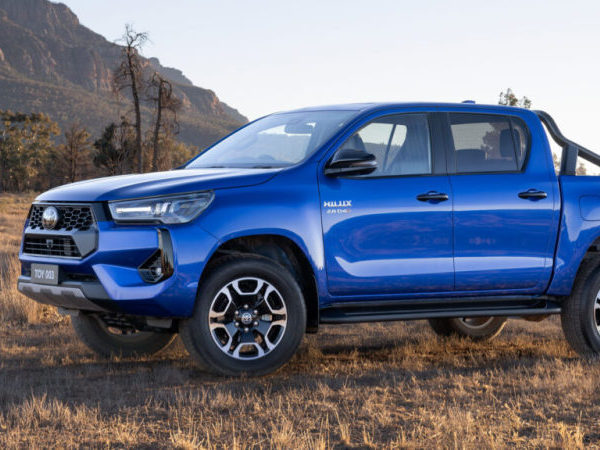
All-New 2025 Toyota Hilux Coming Soon: Here's What to Expect
JamesJun 24, 2025
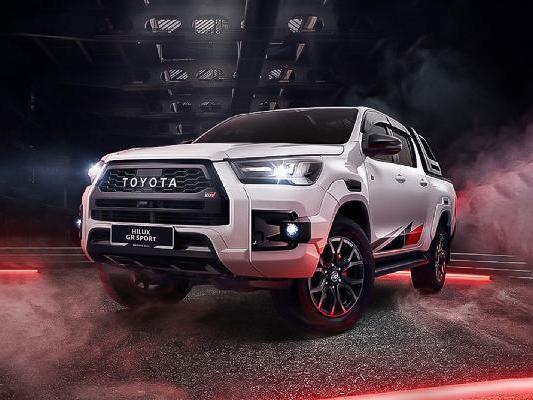
Toyota Hilux: A Buying Guide to Help You Choose the Right Model
MichaelMar 25, 2025
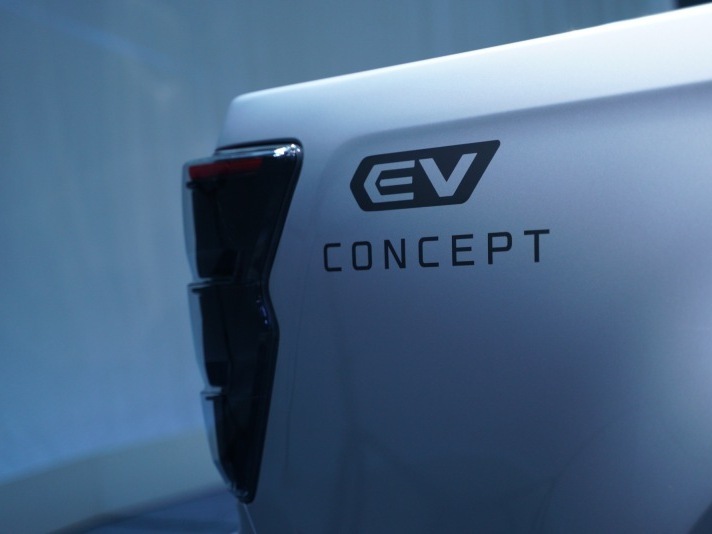
Reasons Why Pickups and SUVs Are Not Suitable for Electric Drive, Industry Secrets You Must Know Before Buying
JamesFeb 14, 2025
View More



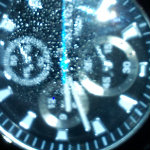






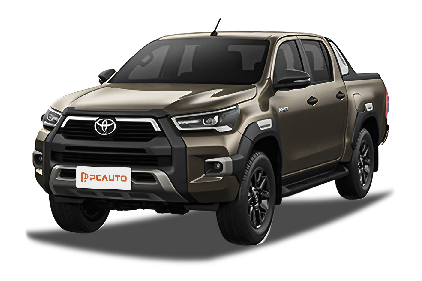
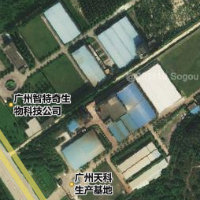


Pros
Cons